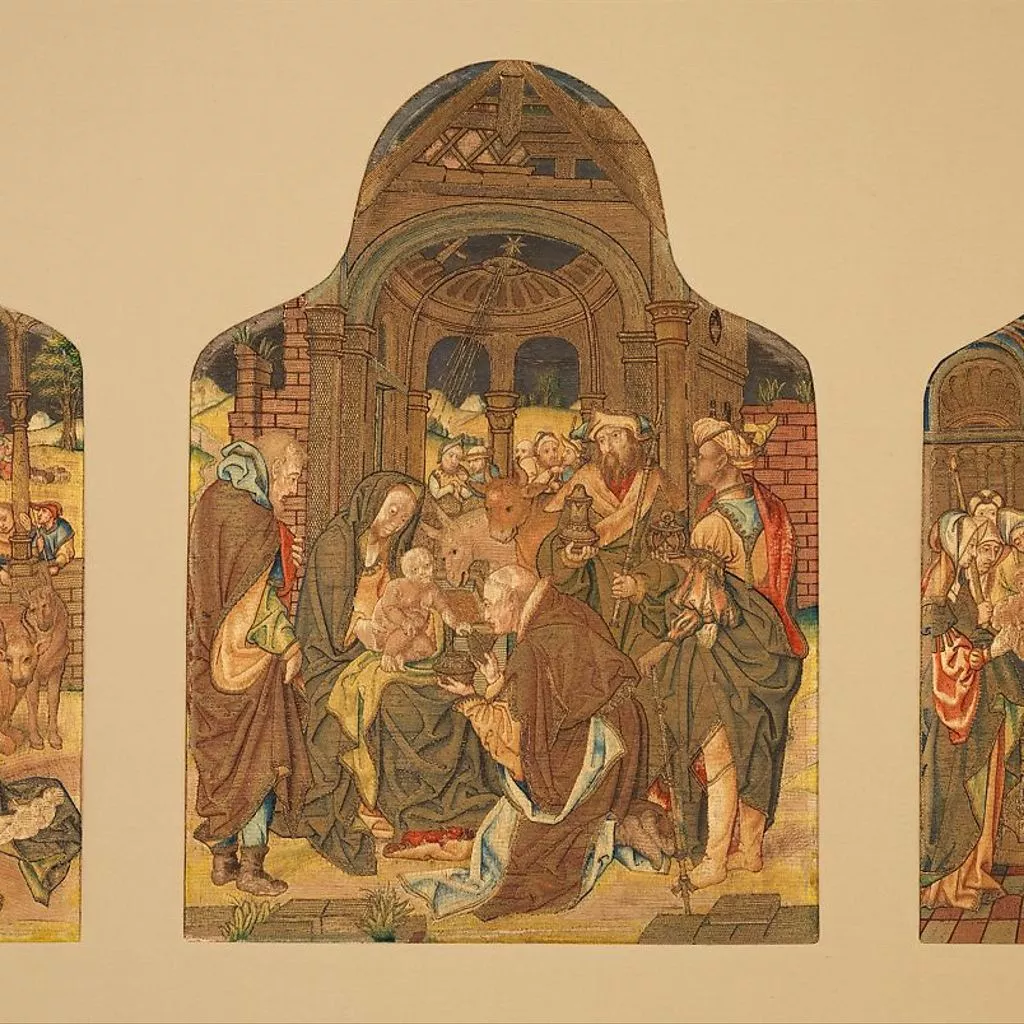Description
Created as three separate panels, this embroidery was intended to be mounted within a hinged frame and be experienced as a triptych: opened to reveal the central Adoration of the Kings, with the Nativity of the Shepherds in the wing to the left, and the Circumcision in the wing to the right. The frame has not survived, and it is not known whether its outer wings, visible when the triptych was closed, were similarly decorated. In subject matter, iconography and design, the embroidery closely follows painted precedents: it speaks, in particular, to devices first invented by the influential Brussels-based painter Rogier van der Weyden, subsequently developed and reiterated by his successful follower, Hans Memling, who ran a large workshop in Bruges. However, the virtuoso embroiderer, or small team of highly talented embroiderers, who created this brought the prestige of their raw materials, working in richly dyed silks and precious metal threads. Whilst the subtle nuances of shade and tone in draperies and facial features were achieved by careful hatching of the silk threads in satin stitch, much of the ground, including the architecture, was executed in the or nué technique, needle woven over a warp of gold thread.




